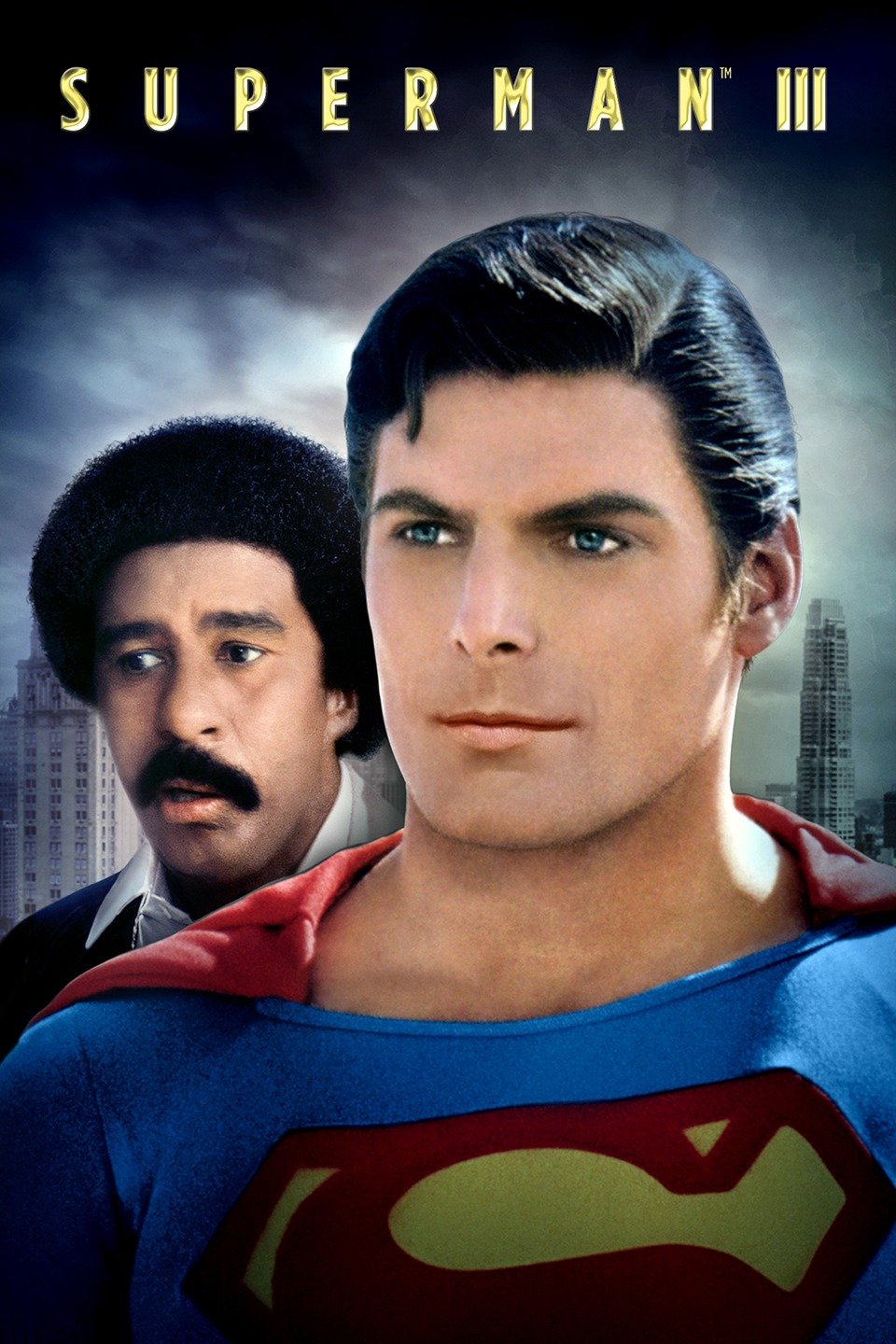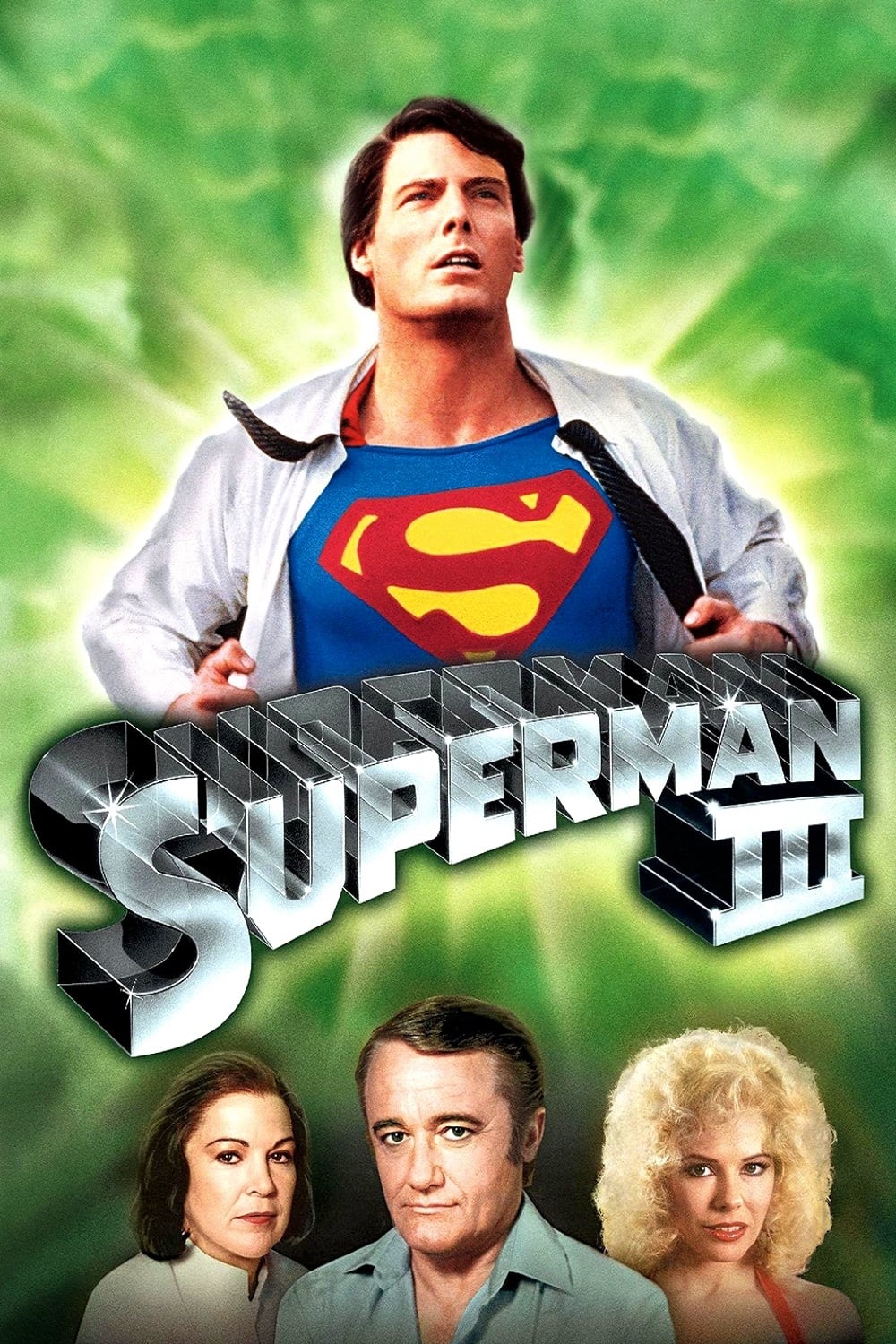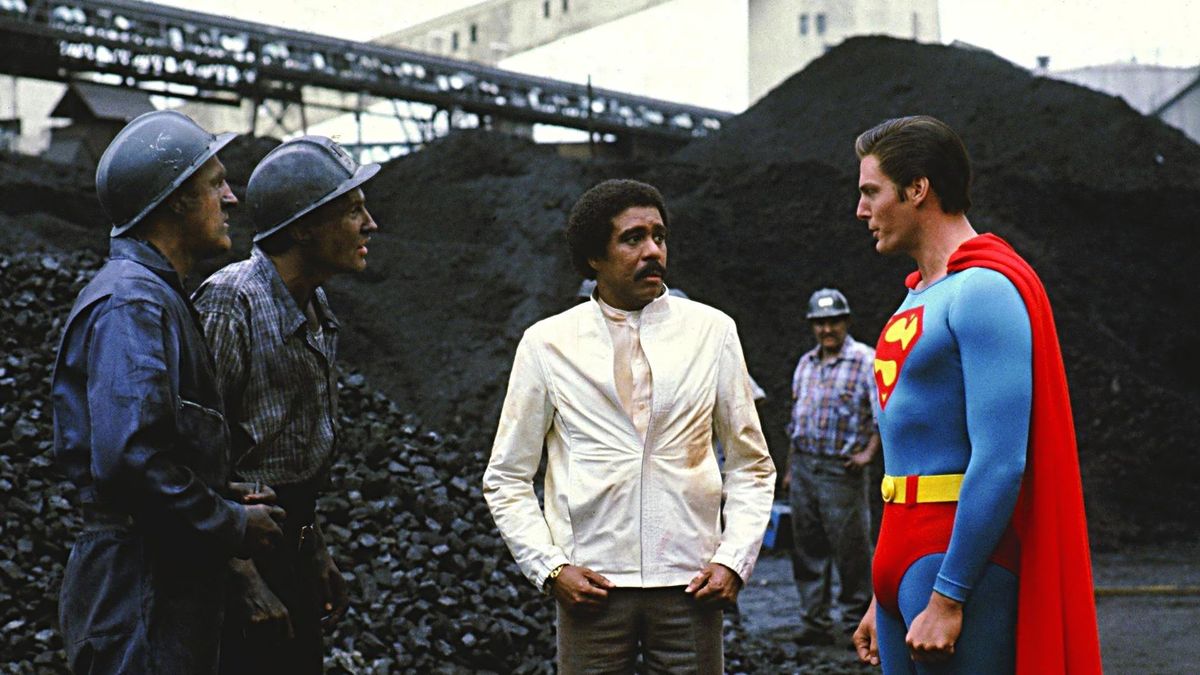Ever wondered what it truly takes to bring a superhero to life on the silver screen? The 1983 film, "Superman III," offers a fascinating glimpse into the intricate web of talent and creativity that shaped this iconic chapter in the Superman saga.
The third installment of the Superman film series, "Superman III," released in 1983, transported audiences back to the world of Metropolis, but with a distinct flavor of the era. Directed by Richard Lester, known for his work on "A Hard Day's Night," the film ventured into a more comedic realm, drawing inspiration from the lighter tones of the Silver Age comic books. This stylistic shift, however, proved to be a double-edged sword, with the film garnering mixed reviews and a lower box office return compared to its predecessors.
The narrative sees Christopher Reeve reprising his role as Clark Kent/Superman, now facing a new set of challenges. He confronts Ross Webster, a wealthy and unscrupulous entrepreneur, played by Robert Vaughn, who enlists the help of a computer genius, Gus Gorman (Richard Pryor), to realize his nefarious schemes. The plot thickens as Webster's ambitions lead to the creation of synthetic Kryptonite, and Superman must navigate the psychological trials that ensue. The film also saw the return of familiar faces like Margot Kidder as Lois Lane, though her role was notably reduced due to disagreements with the producers, and Annette O'Toole as Lana Lang, Supermans high school sweetheart, adding a new layer of personal conflict for the hero. Alongside the main cast, Jackie Cooper and Marc McClure continued to play Perry White and Jimmy Olsen, respectively, solidifying their presence in the Superman universe.
The film's production involved a large cast and crew, each member contributing their unique skills to bring the project to life. The screenplay, penned by David and Leslie Newman, attempted to balance action, comedy, and character development, seeking to appeal to a broad audience. This required carefully coordinated efforts from the various departments, including cinematography, special effects, and set design, all working together to create a memorable viewing experience. Unfortunately, the critical reception to the film was lukewarm. Reviewers cited a disjointed narrative and a shift away from the established tone as contributing factors. Some found the comedic aspects to be overwhelming, while others lamented the lack of depth in the story.
Despite its mixed reception, "Superman III" remains a significant entry in the Superman film canon, offering a unique perspective on the character and his world. The film's exploration of themes such as corporate greed, the dangers of unchecked ambition, and the complexities of human relationships remains relevant today. As the last film produced by Alexander Salkind to star Christopher Reeve, it marked a pivotal moment in the franchise's history. The film also saw the absence of the iconic John Williams Superman theme at the beginning, making a late appearance. Although available on various streaming platforms, the film's availability and reception underscore the lasting legacy of the Superman franchise and its ever-evolving place in cinematic history.
Key Cast and Crew of Superman III
Here's a look at some of the major players who brought "Superman III" to the screen. This includes both key actors and crew members.
| Role | Actor/Crew Member | Notes | Reference |
|---|---|---|---|
| Superman/Clark Kent | Christopher Reeve | Reprising his iconic role | IMDB |
| Lois Lane | Margot Kidder | Appears in a brief cameo | IMDB |
| Lana Lang | Annette O'Toole | Played Supermans high school sweetheart | IMDB |
| Ross Webster | Robert Vaughn | The film's primary antagonist | IMDB |
| Gus Gorman | Richard Pryor | Computer genius | IMDB |
| Director | Richard Lester | Directed "Superman III" | IMDB |
| Screenwriters | David & Leslie Newman | Wrote the screenplay | IMDB |
| Perry White | Jackie Cooper | Appeared as Perry White | IMDB |
| Jimmy Olsen | Marc McClure | Appeared as Jimmy Olsen | IMDB |
| Producer | Alexander Salkind | Producer of "Superman III" | IMDB |
The film's special effects, the action sequences, and the overall look were pivotal. The collaboration between the cast and crew allowed for the development of a unique cinematic experience. It also allowed the director and writers to experiment with different tones, which proved to be a controversial move. The movie's script was written, and the filming locations added a distinct layer of realism and visual interest.
The success of the Superman film series was, in part, dependent on the ability to capture the essence of the original comics and maintain the character's appeal. Although some found "Superman III" to be a departure from the established formula, the filmmakers attempted to bring a fresh perspective to the material. However, critics and audiences reacted with divided opinions. In contrast to its predecessors, the film leaned more into the comedic aspects of the Silver Age comic stories.
The production of "Superman III" faced some challenges, including creative disagreements and shifts in the direction. The filmmakers aimed to deliver a superhero story while incorporating humor and social commentary. This approach to filmmaking was not universally successful. The film's attempt to introduce a new villain and the exploration of Superman's alter ego added layers of complexity to the narrative. The plot also involved a supercomputer and synthetic Kryptonite, which added to the drama and action.
The film's release was widely anticipated, and the marketing campaigns were strategically planned to create excitement. The soundtrack, though lacking the immediate recognition of the John Williams theme, contributed to the overall atmosphere. The film's box office performance was modest, falling short of the high expectations set by the previous films. Although some were disappointed, others saw "Superman III" as an interesting, albeit flawed, contribution to the Superman saga. In the end, "Superman III" remains an intriguing entry in the Superman film canon, representing a unique phase in the characters cinematic journey.
For those looking to experience "Superman III," it's readily available through various streaming platforms. The availability of the film is a testament to the enduring appeal of the Superman franchise. The film continues to attract fans and spark discussion, making it a noteworthy part of the superhero genre. The films ability to engage with audiences and inspire debates on the themes it addresses showcases its cultural significance.
The film's critical reception, including both positive and negative reviews, reflects its place in film history. Despite the mixed responses, the film continues to be discussed and analyzed by fans and critics alike. The movies production values, including the cinematography and special effects, have been noted by film scholars, adding depth to the discussion. These elements contribute to the understanding of the filmmaking process. "Superman III" is viewed differently by everyone. The film continues to be a reference point for discussions of the Superman legacy.


